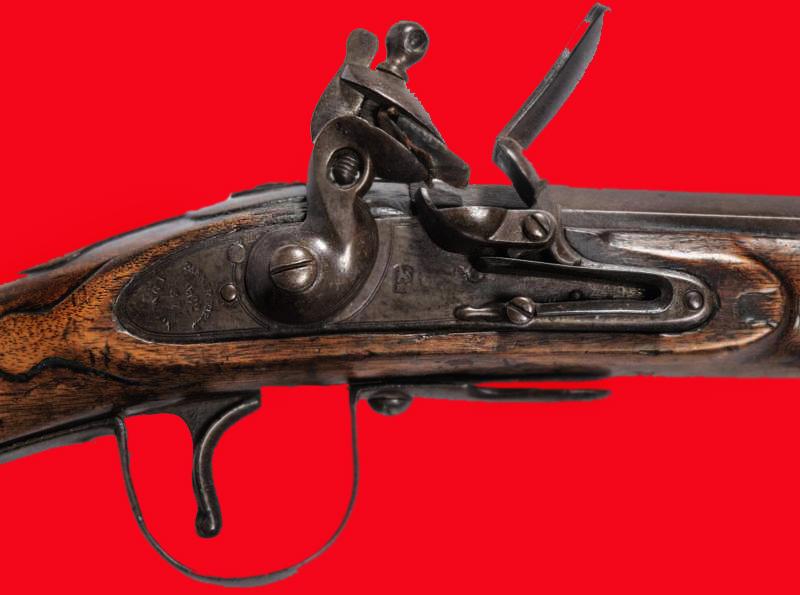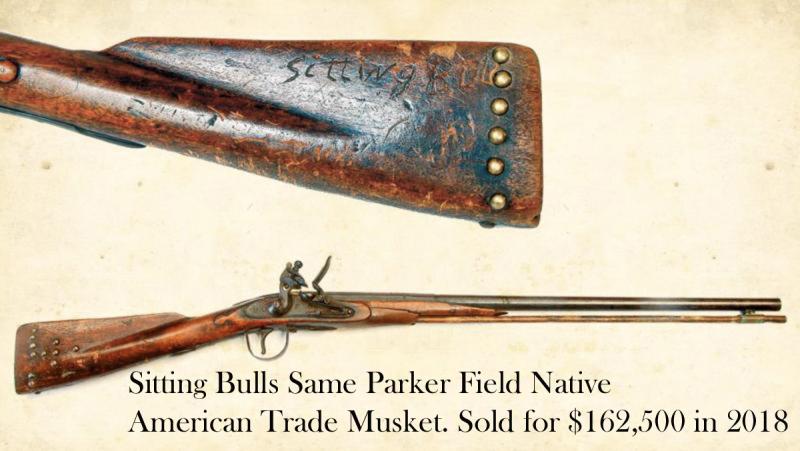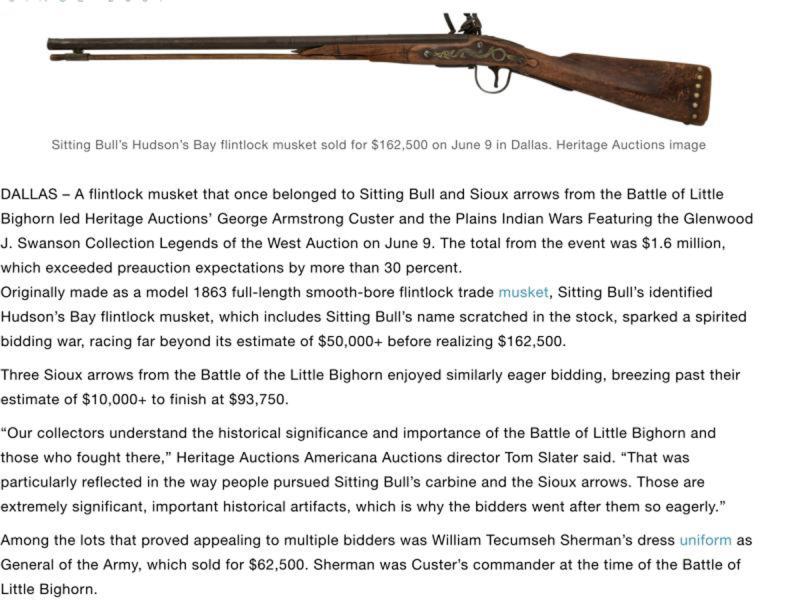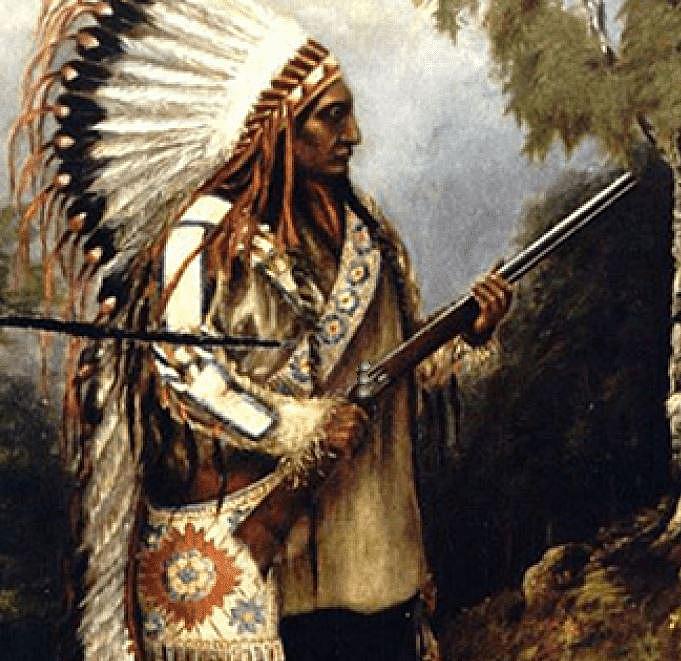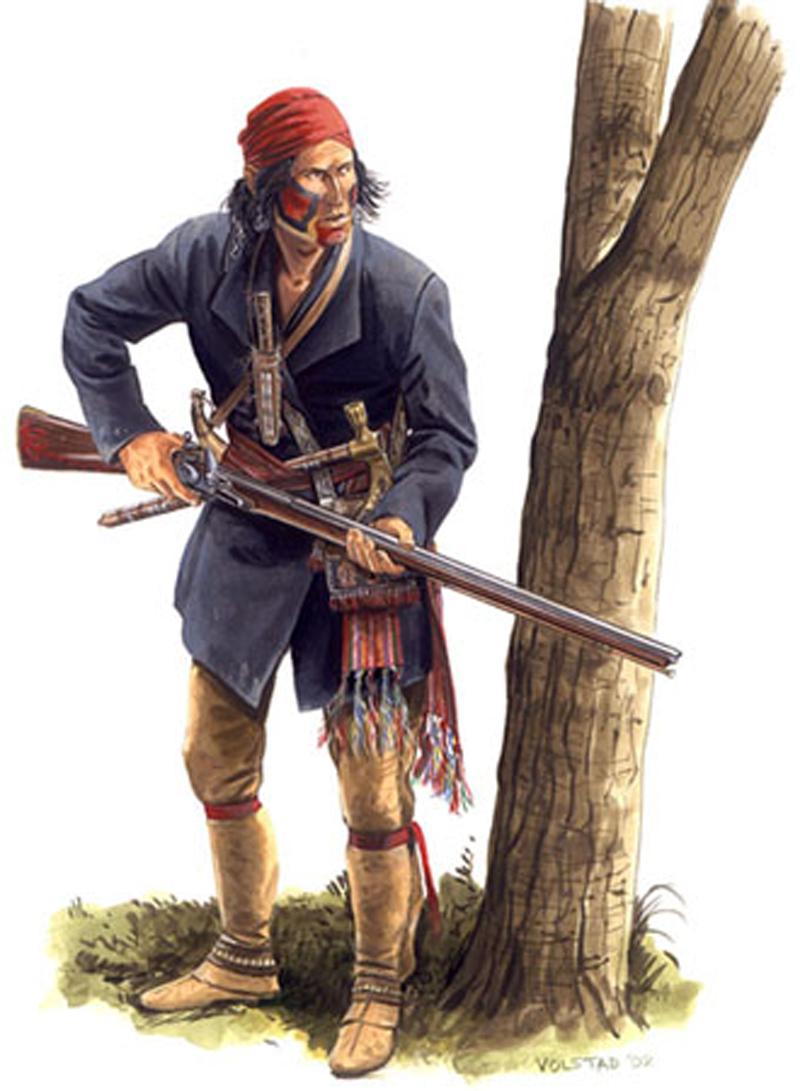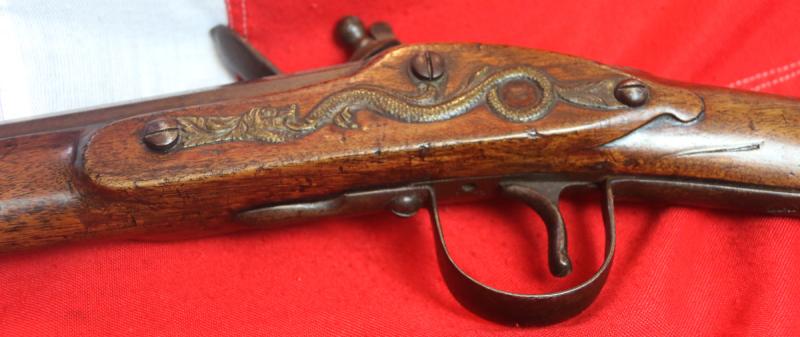An Original & Rare Flintlock 'Chief's' Hudson’s Bay Co. Trade Musket. The Identical Form of Parker Field Trade Musket Used By Chief Sitting Bull, of The Battle at Little Big Horn. The Final Engagement of Colonel George A. Custer & His 7th Cavalry
In superb condition, In fact we would go as far to say you may never see a better condition example like this beauty. Likely untouched since it was retired from use likely 150 years ago. Almost identical to the very same guns as were used by Crow Indian Chief Fighting Bear, and Chief Sitting Bull, world renowned and most famed leader of the Lakota Souix at the Battle of the Little Bighorn
With maker marked flint lock, maker stamped with the tombstone inspectors mark and a seated fox, and a superb serpent sideplate. They were carried into the mountain ranges, open plains, and vast deserts by the native people who relied on the Northwest Gun’s dependability, simple – and importantly, easily repaired – mechanics, and readily available ammunition. In short, no other single firearm was carried through as much of American history, from the primeval forests of the east to the shores of the western coast, as were these Northwest Trade Guns.
This very nice specimen was manufactured by the firm of Parker, Field, & Co. of London and is so legibly stamped on the tail of the lock plate. In front of the cock, the lock plate bears the famous Hudson’s Bay Company viewer (inspector) stamp, the “Tombstone Fox” seated over the initial’s “EB”. The initials are believed to be those of Edward Bond, an early viewer employed by the HBC, and whose descendants served the company for many decades after Edward’s death, continuing to use their forbearer’s cartouche.
A very special feature of this Native American Chief’s Trade Gun is the relatively rare viewer’s acceptance stamp which was applied once the gun was fully assembled and delivered to the HBC. This stamp is partially legible on the right side of the butt stock – the outline of the ½” circle that when originally newly struck it would have been fully legible, it wasa an encircled a standing fox surrounded by the initials “H. H. B. C.” for the Honorable Hudson’s Bay Company.
These acceptance stamps were characteristically lightly struck, and with any wear or handling, they were soon worn away. To my knowledge, only two guns exist on which this stamp is fully legible, and it is very rare that even the outline of the stamp survives as is present on this Trade Gun. The presence of this stamp is certainly an added value and interest.
This is a very good specimen of a Northwest Trade Gun which was traded from the Hudson’s Bay Company at a time before the Indians had access to the later metallic cartridge guns, and certainly present during the active conflicts of the Indian War engagements in the west immediately following the Civil War.
Some Parker Field trade muskets are known to have been used at the Battle of Little Bighorn, and other incidents at the end of the Indian Wars. Another Parker, Field & Sons Trade Gun sold in 2018, it is carved with Sitting Bull's name on the butt, and is directly attributed to him. {See the photos in the gallery}, It sold at auction for $162,500 in 2018. You will notice his had fared poorly under the Chief's ownership, with considerable fore-stock damage.
Another identical Parker Field, Hudson's Bay Co. trade musket belonged to the Apsáalooke (Crow) leader, Fighting Bear. That musket was formerly in the collection of Edwin W. Countryman (1872-1946, a Buffalo, New York, attorney); it was subsequently acquired by Reuben B. Oldfield a collector of Indian items from Bath, New York, at an unknown date; then it was purchased from Reuben Oldfield by Thomas J. Watson (Chairman and CEO of IBM) in 1947; transferred to the IBM Gallery of Arts and Sciences; then donated to the Metropolitan Museum of Art, by the IBM Gallery of Arts and Sciences in 1960.
One other photo in the gallery is an old painting of Sitting Bull holding his musket.
By the early eighteen hundreds, the trading companies had established rigid requirements for the Northwest guns. The full-stocked, smoothbore trade guns varied little in shape and style, but under went changes in barrel lengths. By the late 1820’s, the shorter barrel had become popular. The overall length of a standard Northwest gun with a 30-inch barrel was 45.5 inches. A distinctive feature of these guns was the dragon or serpent shaped side plate. Most Indians would not trade for a gun that did not have the serpent plate. Hansen states that the earliest record of the Hudson’s Bay gun with its distinctive dragon ornament is dated 1805.
After 1800, almost all the Indian trade guns were supplied with blue barrels, brown-varnished stocks, and bright polished locks. These guns were stamped below the pan with a large sitting fox-like animal and enclosed in a viewers panel. These guns carried the brass serpent side plate and an over sized trigger guard for use with mittens.
The following excerpts from an article on The Guns of the Little Big Horn by Terry Shulman are interesting:
In the Battle of the Little Bighorn, Lieutenant Colonel George A. Custer and five companies of the 7th Cavalry were overwhelmed in southeastern Montana Territory by a combined force of Lakota and Cheyenne Indians on June 25, 1876.
The Seventh Cavalry troopers were armed with the Springfield carbine Model 1873 and the Colt Single Action Army revolver Model 1873. The best effective range for this carbine was less than 300 yards.
There is much speculation as to the guns carried by the Indians. Private Charles Windolph of Company H was probably closest to the truth when he estimated that half the warriors carried bows and arrows, one-quarter of them carried a variety of old muzzleloaders and single-shot rifles, and one-quarter carried modern repeaters.
At the Little Bighorn, about 42,000 rounds were either expended or lost. At that rate, the soldiers hit one Indian for about every 840 shots. Since much of the ammunition was probably lost–Indians commented on capturing ammunition in cartridge belts and saddlebags–the hit rate must have been higher.
In the Battle of the Rosebud, eight days before the Little Bighorn fight, General George Crook’s forces fired about 25,000 rounds and may have caused about 100 Indian casualties–about one hit for every 250 shots.
28 inch barrell 44 inches overall
If we knew the name of the Native American Chief that once owned this gun, in our opinion, it would add at least another nought to its price, but, needless to say, we sadly don't.
* Slight error in photos 1,2, & 3. In those photos the trigger guard looks proud to the wood, it isn't, it had not been screwed back in place correctly. See photos 8 and 9 to see how it correctly looks
As with all our items it comes complete with our certificate of authenticity
Code: 24795
6800.00 GBP


